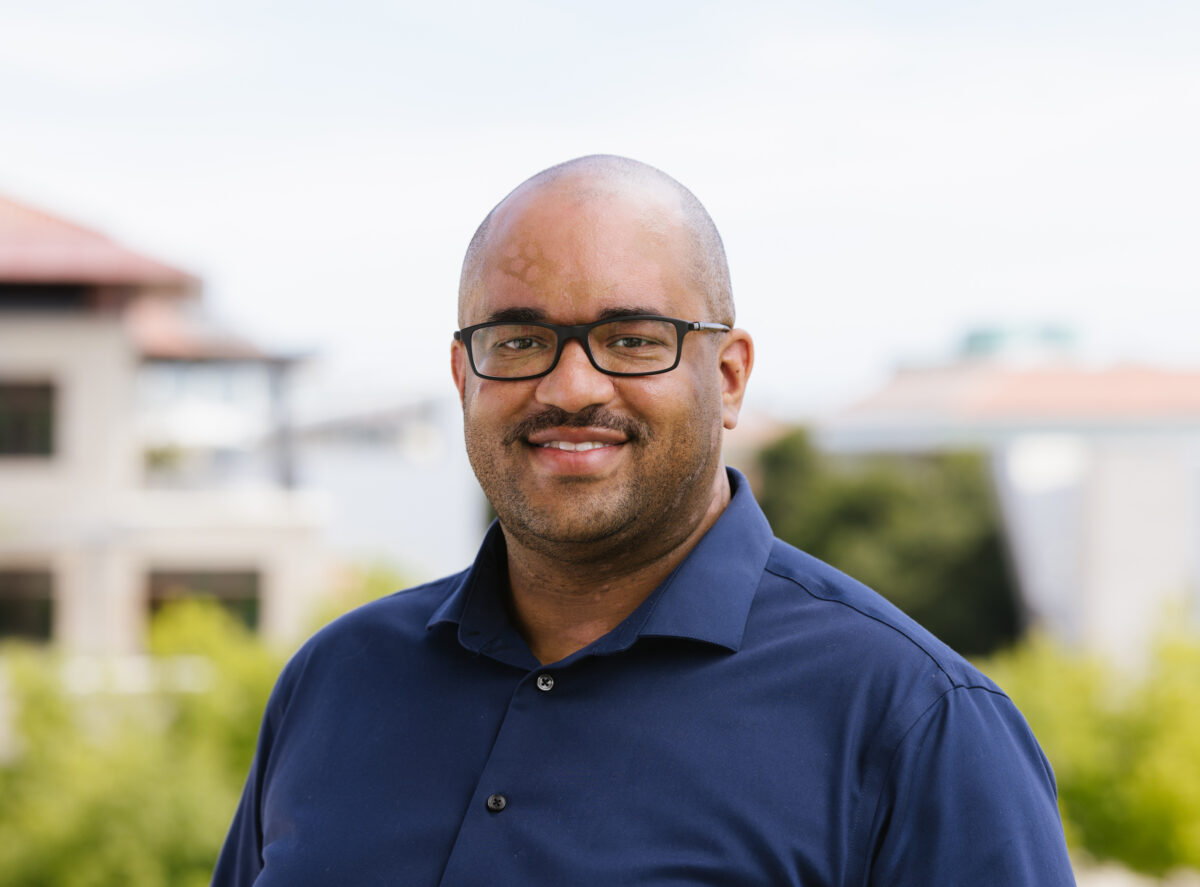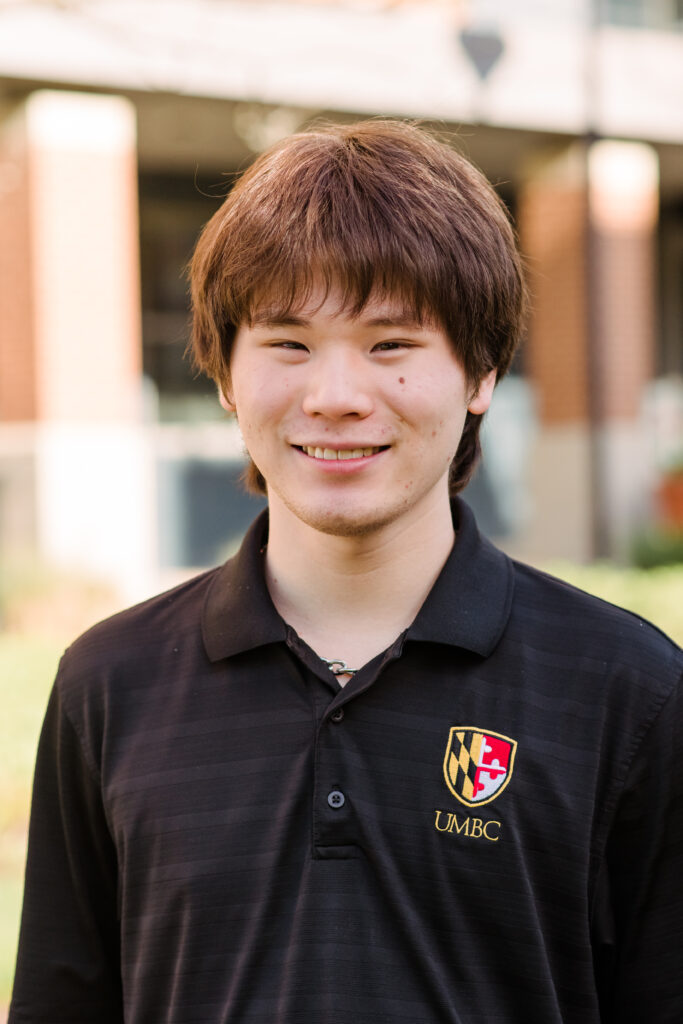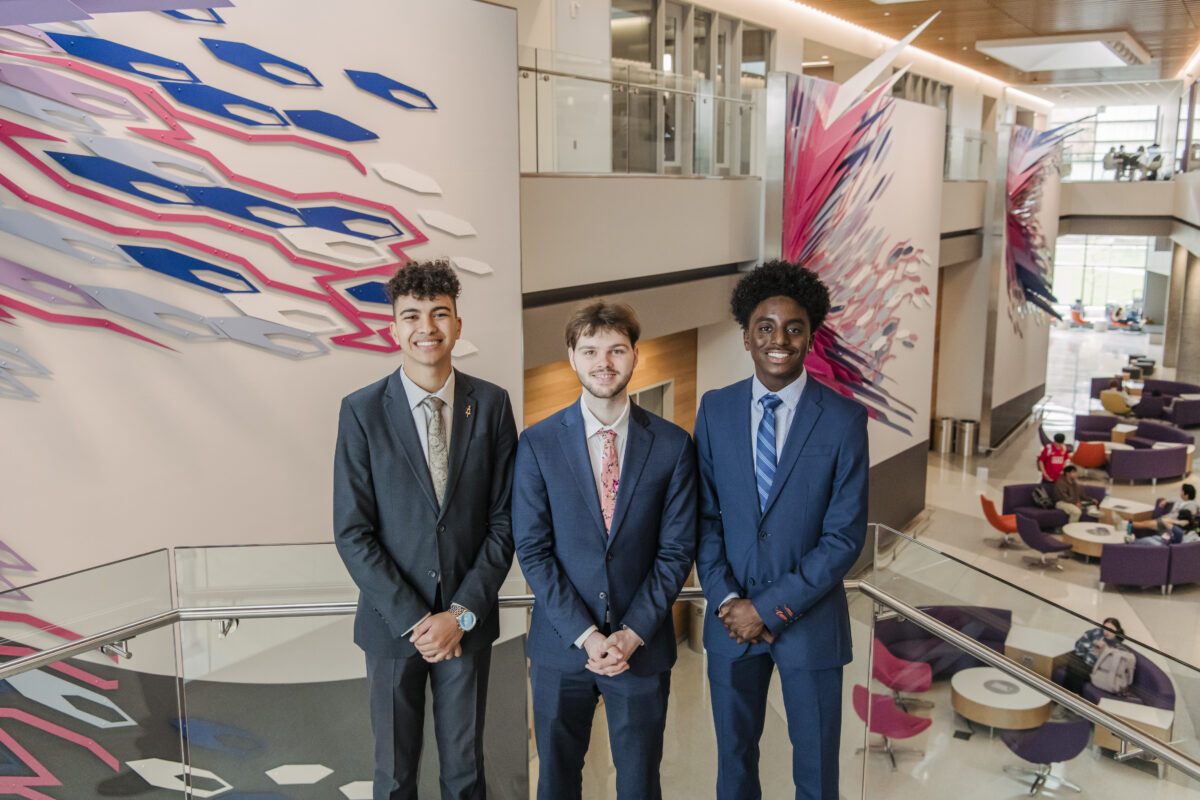Driven by Curiosity
URCAD 2015 celebrates undergraduate student experiences in research and creative achievement.
“My journey to becoming a college professor really sparked here,” shared Trevor Blank, in a humorous and inspiring talk at UMBC’s 19th annual Undergraduate Research and Creative Achievement Day (URCAD) on April 22, 2015.
As a transfer student from Montgomery College, Blank ’05, American studies, was fascinated by the history and folklore of a structure that once stood on UMBC’s campus: the Hillcrest Building, constructed in 1921 as the Spring Grove State Hospital. A different person might read a book about their new interest and move on, but Blank chose to write the book instead.
Today, Blank is an assistant professor of communication at SUNY Potsdam and the author or editor of seven books, including The Last Laugh: Folk Humor, Celebrity Culture, and Mass-Mediated Disasters in the Digital Age (University of Wisconsin Press 2013). He insists, “Research isn’t some laborious task.” For him, it’s about passion—“It’s personal and enjoyable.”
“Dr. Blank’s story is a wonderful reminder about the value of the distinctive undergraduate experience UMBC provides,” explains Diane M. Lee, vice provost and dean of undergraduate education. The university began organizing URCAD in the late 1990s to highlight UMBC’s particularly robust research opportunities for undergraduate students.
For Janet McGlynn, director of communications and outreach for the Office of Undergraduate Education, URCAD itself provides students with an essential aspect of research training: a foundation in research communications. She shares, “Undergraduate researchers and URCAD presenters who go on to graduate school find that they are well prepared to present their work in department meetings or larger symposia. They know how to make a poster and how to talk about their work to either a general or an expert audience.”
URCAD 2015 featured over 200 presentations, including artistic performances, film screenings, and oral and poster presentations, across all disciplines. Each of these projects represented months or years of independent and collaborative research and creative production.
A diverse team of artists, designers, engineers, and environmental advocates offered an URCAD sneak peek demonstration of “The Kraken,” their entry into Baltimore’s Kinetic Sculpture Race. “The Kraken” is a massive moving sculpture of a sea monster constructed out of recycled plastic to draw attention to the effect of plastic waste on aquatic ecosystems.
Rob Ford ’16, environmental science, reflected that the project has given him a new perspective on how to approach multifaceted problems. President Hrabowski, watching a demo of the project, commented that the team exemplifies the curiosity necessary for research. “Even as they were explaining to me how they went about the process,” he said, “they were asking more questions.”
Paul Tschirgi ’15, visual arts, worked with a team of researchers across several disciplines to develop Bandit, a video game that teaches students about the viewpoints of diverse actors in Civil War Baltimore through the Pratt Street Riots. Tschirgi hopes to eventually create and market his own games, and feels he benefited significantly from working with a history graduate class. “This isn’t just a game about trying to achieve some objective” or “what would be fun,” he explains. “It’s also about learning actual history.”
Another team member, Savannah Myers ’16, visual arts, shared, “I’m excited to show what can be accomplished [through collaboration]. Often times people don’t realize how much work and research goes into creating interactive experiences.”
Courtney Tyler ’15, dance, developed original choreography for the movement of characters in another virtual gaming environment designed by Paul Tschirgi. During URCAD, they presented a video of four human dancers superimposed over non-human game characters. “I pictured winged characters and tried to incorporate movement…with arm gestures [to symbolize flight],” Tyler explained.
Chana Honick ’17, interdisciplinary studies and chemistry, exhibited an art installation depicting the Haber process, where hydrogen and nitrogen gas combine to form ammonia. The interactive installation used wood and springs to represent the gases and was surrounded by QR codes that enabled participants to learn more about the Haber process and take a survey on the ethics of Haber’s work. Honick aimed to start conversations about science through art. “I’m not a person who learns through textbooks,” she said, “and I wanted to create an interactive way to explore this chemical process.”
Julie Norton ’15, biological sciences, helped isolate and describe a virus called a bacteriophage from a central Russian soil sample. Bacteriophages have the potential to kill harmful bacteria, making food safer or treating infections in humans. Norton notes that research into therapeutic bacteriophages is underdeveloped, and this project revealed a possible path for her life’s work, “traveling around the world…to do research.”
Kevin Sears ’15, computer engineering, worked with Michael Warren ’15, mechanical engineering, to create a “smart” air vent that automatically regulates a room’s temperature using sensors controlled by a mobile web application. Sears demonstrated the vent live during URCAD.
Benjamin Straube ’18, political science, studied the 2014 Maryland gubernatorial election to analyze why former Lt. Gov. Anthony Brown lost despite leading in the polls for much of the race in a state where the Democratic Party has a 2:1 registration advantage. With an interest in pursuing a career in politics, Straube says the research experience was helpful for learning what can go wrong in a campaign. He particularly valued having a research mentor, calling his experience working with Tyson King-Meadows, political science and Africana studies, “an amazing asset.”
Shannon Mitchell ’15, American studies and psychology, analyzed more than 200 news articles on the Trayvon Martin case to explore whether media coverage was skewed geographically. She hopes to continue similar research relating to the social media aspects of news and “how those inputs are being vetted” by journalists.
Andres Camacho ’15, interdisciplinary studies, presented “True Greens,” an entrepreneurial project designed to test how students could shape food systems on campus, growing microgreens to sell to UMBC Dining Services for on-campus consumption. The project has opened his eyes to what entrepreneurship means. “I used to think being an entrepreneur was about building apps,” Camacho said, “but you can use entrepreneurship to solve much bigger problems.”
See the URCAD website for a full list of presenters and abstracts, and the URCAD photo gallery for images from the event.
(04/24/2015)



